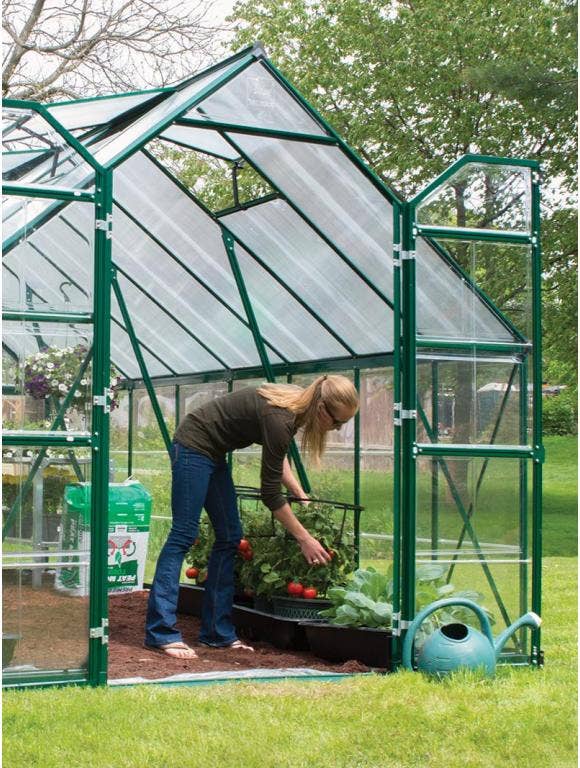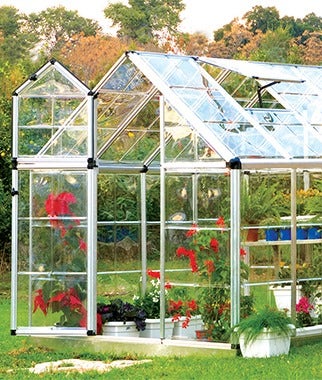
Growing under the cover of a greenhouse is a little different than traditional outdoor gardening. The sun will provide light and some heat, but as a greenhouse gardener, it's up to you to give your plants everything else they need while serving as a pest and problem watchdog.
There are benefits of completely controlling the growing environment. It's possible to provide exactly the right amount of moisture and nutrients. And unlike growing outside, you can control, or at least influence, the temperature.
As in the garden, soil is very important. Make sure to use sterile, high quality potting soil that drains well in the greenhouse. A growing medium that holds too much water causes plant roots to suffocate and increases the possibility of seedlings and plants rotting at the soil line or crown which is known as dampening-off. Lightweight potting soil allows plants roots access to air.
Regular feeding of balanced fertilizer is even more important in the greenhouse than in the garden. Topsoil microorganisms make nutrients for plants growing in the ground, but even when using potting soil with added fertilizer, nutrients are used up or washed out of growing medium within a matter of weeks. When fertilizing seedlings, use a dilute mixture until the seedlings have grown for several weeks.
Because the greenhouse is an enclosed environment, good housekeeping increases your growing success. Organization will also help reduce headaches down the road.
"The cleaner the better," said Jay Stanton, Past-President of the Central Pennsylvania Hobby Greenhouse Association and life-long greenhouse grower, "Not only for aesthetics, but also to reduce the problem of fungus and disease due to plant material lying around where infection can spread."
Regularly inspecting the plants is the best method to prevent pest problems in the greenhouse. Look under leaves and behind some larger plants for insects or their eggs and inspect and discard any diseased plants, he said. If you are bringing in garden plants to overwinter in your greenhouse, closely inspect plants for signs of slugs or other insects. Spray plants with insecticidal soap if you suspect insects are present. Treat for slugs and snails.
Another element of the outside world you need to bring in your greenhouse is wind.
"Air circulation cannot be stressed too much here, " he said, "Not a high velocity wind but a steady supply of air especially in the corners and back sides of the greenhouse." Air circulation keeps the foliage and the soil and greenhouse surfaces dry. Fungus and disease prosper where there is moisture. A simple, gentle fan is enough to keep a slight breeze blowing.
On hot days, open the door and vent and turn on the fan to help cool your greenhouse. To use your greenhouse in summer, and to protect your plants during sweltering spells in spring and fall, use of a shade cloth will reduce the interior temperature significantly. Shade clothes are draped over the roof of the greenhouse.
Finally, organization is important. Many headaches can be avoided if you have a plan for your greenhouse. Choose and layout benches and large pots so you have space to move around to inspect, feed and water the plants. Leave room for germination trays when filling the greenhouse in fall. When starting seed, make sure and label each germination tray and each plant that you start. This will prevent wondering which plants are the bell peppers and which are the jalapeno's come transplant time. Keeping a greenhouse journal can help you perfect growing under cover over time.
Healthy plants can easily stand up to pests. Proper feeding and watering go a long way to avoiding problems. Plants that are stressed due to lack of water and nutrients are more likely to fall prey to diseases. Unlike gardening outside, greenhouse growing includes meeting a greater percentage of the plant's needs. You get to play Mother Nature.



